Why are the plants we are trying not to grow so hard to kill? Weeds can be quite frustrating to home gardeners as they struggle to get them under control. There are a few things you can do to help make your efforts more successful.
-
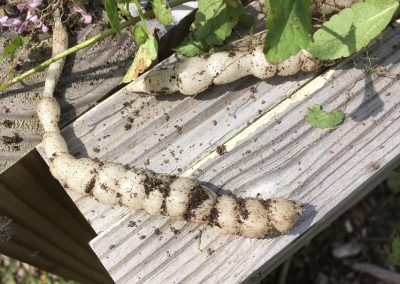
Florida Betony aka Rattlesnake Weed forms tubers that can start a new plant. Photo: JMcConnell, UF/IFAS
-
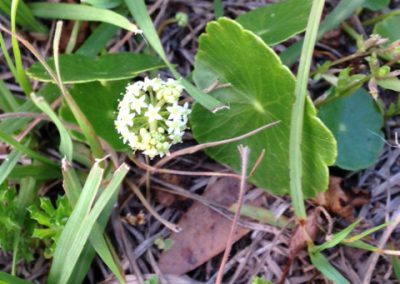
Dollarweed is a perennial that spreads by runners. Pictured here it is in flower. JMcConnell, UF/IFAS
-
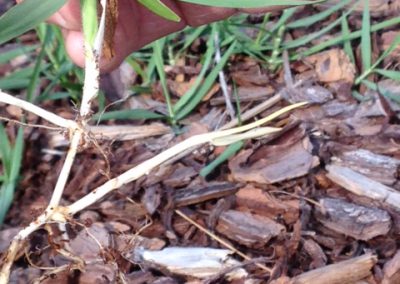
Torpedograss rhizomes can form new plants. JMcConnell, UF/IFAS
-
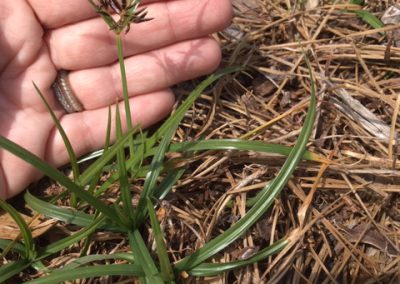
Purple sedge in flower. JMcConnell, UF/IFAS
-
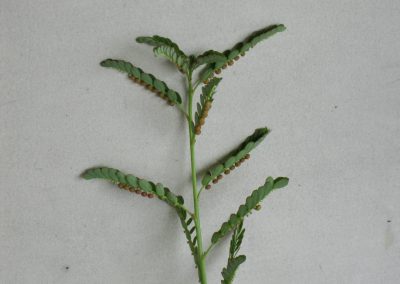
Chamberbitter is an annual weed that forms seed capsules filled with seeds. JMcConnell, UF/IFAS
-
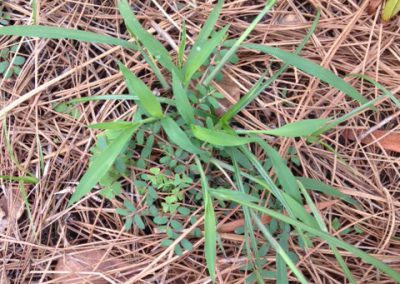
Crabgrass and spurge are both annual weeds. JMcConnell, UF/IFAS
Identify the weed. It might seem like it doesn’t matter what the plant is if you know you want to get rid of it, but a big part of your strategy should be figuring out why that plant is being so difficult. Below are the reasons why weed identification is so critical in your fight to control it.
- Which plant are you favoring with your maintenance routine? All plants have similar basic needs: water, sunlight, nutrients, and a space to grow, but some perform better with varying amounts of each of these inputs. Sometimes we can influence these factors in a way that favors one plant over another. The best example is how we irrigate our landscape. If you plant drought tolerant shrubs, such as Indian Hawthorne, which can survive with little to no irrigation after establishment, and then continue to water 2-3 times a week, is it any wonder that you get water loving weeds such as dollarweed, torpedograss, or sedge? Only apply inputs that support your desirable plants and nothing more.
- Recognize the weed type. There are three main types of weeds we typically encounter: broadleaf, grass, or sedge. Some herbicides are broad-spectrum, which means they kill any type of plant, while others are selective. Selective herbicides generally target either broadleaf, grass or sedge weeds and have minimal impact on the other types. This can be very important information to have if you are shopping for an herbicide.
- Broadleaf examples: spurge, chickweed, Florida Betony, dollarweed, chamberbitter, doveweed
- Sedge examples: purple nutsedge, yellow nutsedge, kyllinga
- Grass examples: crabgrass, goosegrass, torpedograss
- Understand the life cycle. Herbaceous plants fall into three main life cycle categories: annual, perennial, or biennial. Annuals and biennials tend to reproduce primarily from seed. The annual plant completes its entire life cycle in one season or year and a biennial takes two years. When targeting these two, your goal is to get rid of the plant before it flowers and sets seed to reduce future crops. If you miss that window and the weeds go to seed, plan to use a pre-emergent herbicide prior to their next scheduled germination date (usually the next season). Perennials live for more than 2 years and tend to be tough to manage. They may reproduce by seed but many also multiply by vegetative means. To put this simply, they store everything they need in tiny pieces of the plant and if left in place, it will generate more plants. So, that little tiny root fragment from dollar weed you didn’t pull up – yep, it’ll grow a whole new one in its place!
- Summer annuals: spurge, crabgrass, goosegrass
- Winter annuals: chickweed, black medic, henbit
- Biennials: dandelion, thistle
- Perennials: dollarweed, Florida Betony, torpedograss, purple nutsedge, Virginia buttonweed
For more information on weeds and weed control in lawns and landscapes, contact your local UF/IFAS County Extension Office!
- Break the Breeding Cycle to Minimize Mosquitoes - June 26, 2025
- What’s the buzz about bee flies? - May 15, 2025
- What Vegetables Can I Plant in April? - April 3, 2025
